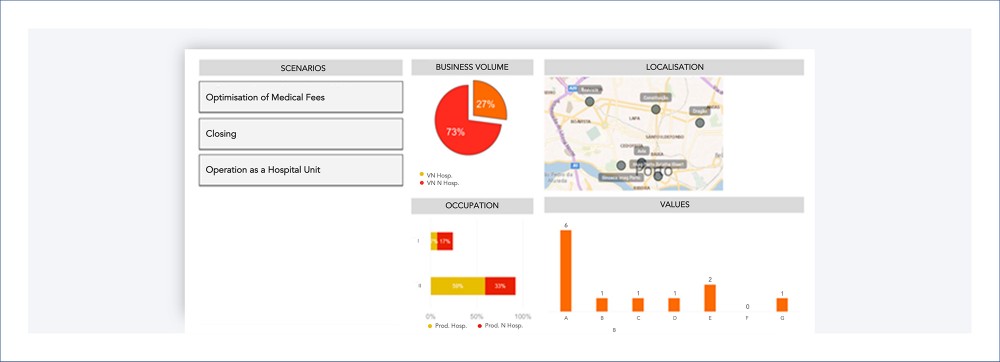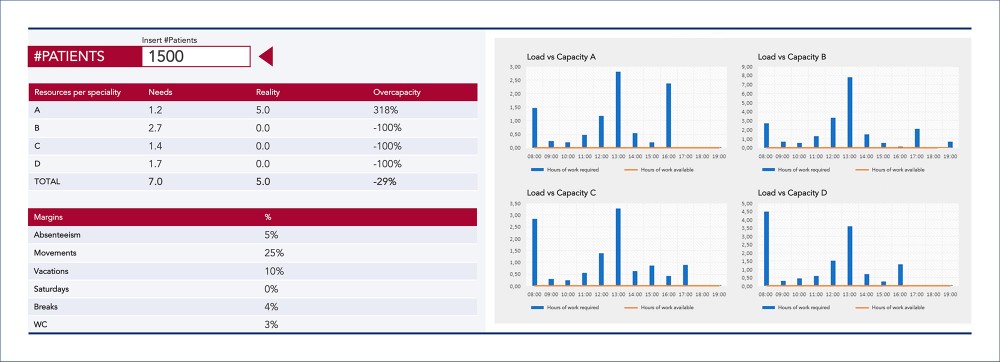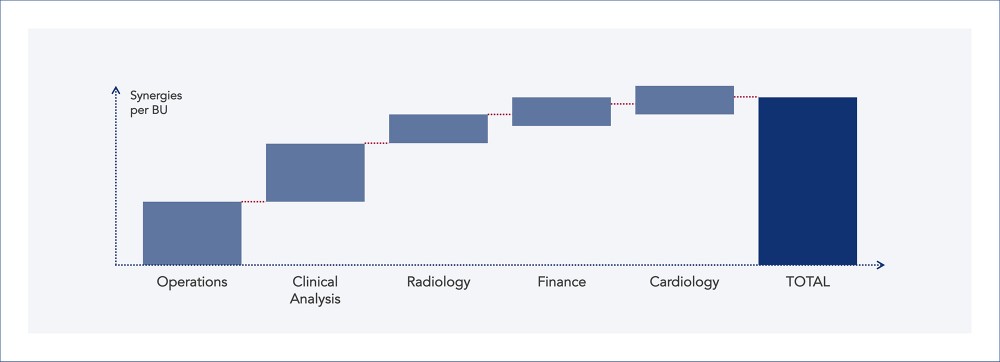One of the European leaders in complementary clinical diagnostics has been implementing a growth strategy through acquisitions and mergers using KAIZEN™ methodologies to generate synergies. The project involves a merger in Portugal that yielded 4,5% of the annual turnover through the optimisation of the network of stations and laboratories, improved procurement, digital transformation, centralisation of activities and the implementation of improvement routines in all teams.
The Company
The group is a European leader in the field of complementary clinical diagnostics with more than 50 years’ experience. It has more than 250 laboratories and 13,000 employees, performing some 213 million tests every year.
The group’s strategic project for growth was based on a long-term strategy sustained by the acquisition and organic growth of the company at European level. For more than 10 years, the acquisitions made gave rise to major structural programmes based on the standardisation of processes in the different existing and acquired companies, the survey and assurance of implementation of the various synergies, and a strategic alignment with all the geographies where the group was present.
The Challenge
The project under analysis has, at its origin, the acquisition of a competing group and, with it, the increase of the invoicing volume. Operational goals include process standardisation between the two companies, reduction of Lead Time in the delivery of exams (in all activity pillars) and improvement of the internal customer service level of the support departments (IT, Logistics, Call Centre, partners).
The initial diagnosis identified several improvement opportunities to be developed in the merger process such as the overlapping of networks and collection centres of both companies, the fragmented reality in the radiology operation (16 different companies), the lack of a pricing and consumption analysis model in the acquired company, and different information systems for laboratories, radiology and central structures. The synergies estimated in the due diligence corresponded to 3% of annual turnover.
The Approach
The first cycle of activity was essentially devoted to the design and planning of operations for the future. The main actions implemented were:
- Global optimisation of the clinical analysis laboratory network and dimensioning of the collection centres;
- Laboratory layout improvement and automation;
- Supply chain optimisation (routes, process and laboratory entry curve) and renegotiation of contracts with suppliers;
- Design and development of a new Laboratory Information System;
- Improvement of the customer experience – Digital Report;
- Improvement of clinicians’ productivity through the implementation of voice recognition and standardised reporting;
- Increased productivity of the radiology centres (standard times per examination, paperless environment, standard work for technicians and assistants);
- Centralisation of C activities (with less intensity) in clinical analysis in a single laboratory;
- Implementation of Daily KAIZEN™ in the support structures and operations;
- Consolidation of the management bodies;
- Optimisation of the call centre operation;
- Readjustment of the structure for growth and acquisition of players in the various areas of activity (5 new acquisitions).

Standardisation of the radiology network

Dimensioning models for the laboratory

Routing algorithm and logistics standardisation
The Results
The improvement of the main indicators compared to the year before the project was evident, both in terms of growth and operational excellence:
- Growth through acquisition + organic growth 200%;
- Decrease of time to deliver results in pilot 50%;
- Average productivity improvement of more than 5% in all business areas;
- Improvement in customer service rate by >5p.p.
The synergies developed corresponded to savings of 4.5% of annual turnover.

Synergies per Business Unit
Conclusion
These results indicate that the growth and operational excellence strategy executed since 2009 is indeed a successful strategy having generated a CAGR of 28% in the last 10 years. This growth also has as a breakthrough element: a constant improvement in the level of service for the users of the group with a constant view to improving the quality of service provided through the joint growth of the organisation with the medical and management teams. Therefore, the company in question does not base its growth strategy solely on acquisition projects, but also on organic growth.
#healthcare #m&a
See more on Healthcare
Find out more about transformation in this sector
See more on Innovation & Expansion
Find out more about improving this business area
